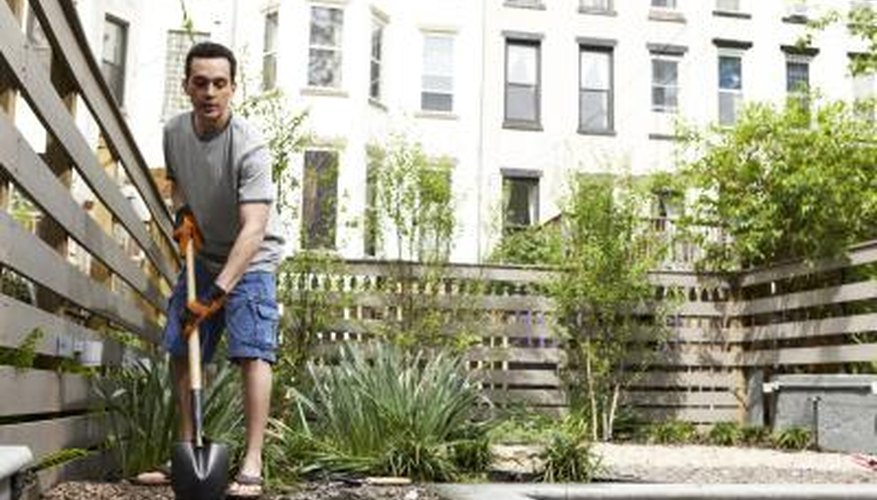Hawthorn bushes are low-maintenance evergreen shrubs. Growing up to 6 feet tall and wide, these flowering shrubs are ideal for planting near homes, along sidewalks or in small gardens. Larger ones are grown for hedges between homes. They have dark-green leathery leaves and bloom pink or white flowers in the spring. If your hawthorn bush isn't flourishing in its present location, you can transplant to another location in your yard. It is best to transplant a young bush in the early spring after the last frost but before the buds appear.
- Hawthorn bushes are low-maintenance evergreen shrubs.
- It is best to transplant a young bush in the early spring after the last frost but before the buds appear.
Find a new location in full sun with well-drained soil.
Water the hawthorn bush two to three days before transplanting. The soil and the root ball should be moist before moving to its new location.
Dig a trench 12 inches around and 12 inches deep to remove the entire root ball. Place the shovel under the root ball to lift it out of the hole. Be careful not to damage the roots when lifting out of the ground. Leave the soil on the roots.
- Water the hawthorn bush two to three days before transplanting.
- Place the shovel under the root ball to lift it out of the hole.
Wrap the root ball in damp burlap and tie with twine or yarn. Place the hawthorn shrub in a wheelbarrow or on an old sheet and drag to new location if it is too heavy to carry.
Dig a hole in the new site twice as wide as the root ball. Water the hole and let the water drain before planting.
- Dig a hole in the new site twice as wide as the root ball.
Remove the burlap. Place the root ball at the same depth as it was in the first location.
Backfill the hole with soil firmly. Water deeply until you see water puddling on top of the soil. Spread a 3-inch layer of mulch around the hawthorn bush to maintain moisture and suppress weeds.
